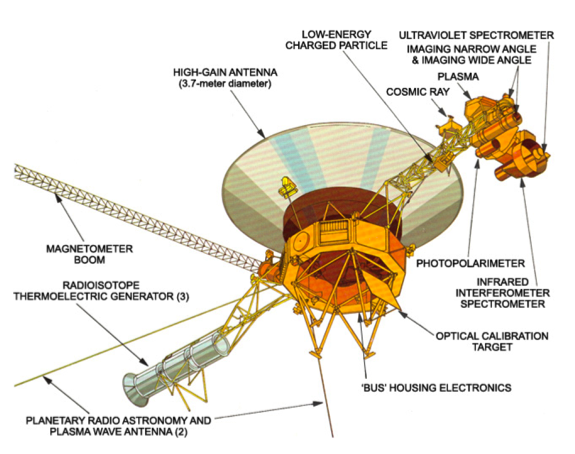- measure the energy spectrum of electrons from 3 - 110 MeV.
- measure the energy spectra and elemental composition of all cosmic ray nuclei from hydrogen through iron over an energy range from approximately 1 - 500MeV/nuc.
- provide information on the energy content, origin, acceleration process, life history, and dynamics of cosmic rays in the galaxy, and contribute to an understanding of the nucleosynthesis of elements in cosmic ray sources.
- provide information on the transport of cosmic rays, Jovian electrons, and low energy interplanetary particles over an extended region of interplanetary space.
- measure the three-dimensional streaming patterns of nuclei from Hydrogen through Iron and electrons over an extended range.
- measure particle charge compostion in the magnetosphere of Jupiter, Saturn, Uranus, and Neptune.

Instrument Description
The Plasma Wave Receiver consisted of a 16_channel spectrum analyzer covering the range of 10 Hertz to 56.2 kiloHertz and a wideband waveform receiver which returns the waveform of waves in the frequency range of 40 Hertz to 12 kiloHertz. The spectrum analyzer provides data on a continual basis with a maximum temporal resolution of one spectrum per 4 seconds. The waveform receiver returns 4- bit samples of the electric field measured at a rate of 28,800 samples per second.
PWS Science Objective
References Helpful in Scoping the Mission
Mission Description
Spacecraft Description
Spacecraft Description
The PWS Data
Instrument Description - Also see Space Science Reviews 21 (1977-Issue 3) 289-308.
The Data are located at the PDS/PPI node.
The Data are located at the PDS/PPI node.
Publications - A listing of team members to facilitate literature searches.
 PDS: The Planetary Atmospheres Node
PDS: The Planetary Atmospheres Node


